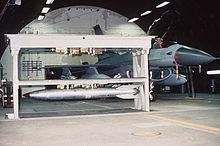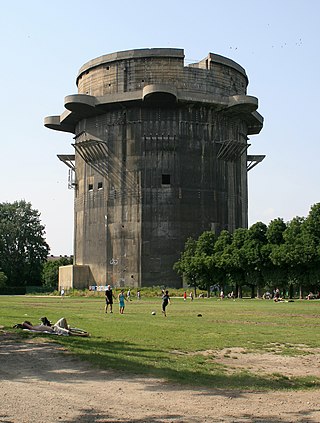
A bunker is a defensive military fortification designed to protect people and valued materials from falling bombs, artillery, or other attacks. Bunkers are almost always underground, in contrast to blockhouses which are mostly above ground. They were used extensively in World War I, World War II, and the Cold War for weapons facilities, command and control centers, and storage facilities. Bunkers can also be used as protection from tornadoes.
A bunker buster is a type of munition that is designed to penetrate hardened targets or targets buried deep underground, such as military bunkers.

Royal Air Force Brüggen, more commonly known as RAF Brüggen, in Germany was a Royal Air Force station until 15 June 2001. It was situated next to the village of Elmpt, approximately 43 kilometres (27 mi) west of Düsseldorf on the Dutch–German border. The base was named after the village of Brüggen, the nearest rail depot. Construction began in mid-1952, which involved the clearing of forest and draining of marshland. The station became active in 1953 during the rapid expansion of NATO forces in Europe. The main paint shop situated next to the main runway was responsible for the surface finishing of all aircraft, ground equipment and RAF Regiment Rapier missile systems. In 2002, it was handed over to the British Army and renamed Javelin Barracks.

The Single Integrated Operational Plan (SIOP) was the United States' general plan for nuclear war from 1961 to 2003. The SIOP gave the President of the United States a range of targeting options, and described launch procedures and target sets against which nuclear weapons would be launched. The plan integrated the capabilities of the nuclear triad of strategic bombers, land-based intercontinental ballistic missiles (ICBM), and sea-based submarine-launched ballistic missiles (SLBM). The SIOP was a highly classified document, and was one of the most secret and sensitive issues in U.S. national security policy.

The B61 nuclear bomb is the primary thermonuclear gravity bomb in the United States Enduring Stockpile following the end of the Cold War. It is a low-to-intermediate yield strategic and tactical nuclear weapon featuring a two-stage radiation implosion design.
Araxos is a village and community in the municipal unit of Larissos of the municipality of West Achaea in the northwestern part of Achaea, Greece, approximately 29 km southwest of Patras. The community consists of the villages Araxos, Akrotirio Araxos, and Taxiarches. It is located in the coastal plains near Cape Araxos, which separates the Gulf of Patras from the Ionian Sea. There are two lagoons near the village Araxos: Prokopos to the southwest and Kalogria to the north. The Mavra Vouna hills are in the north, Cape Araxos being their northernmost point. It is 4 km west of Lakkopetra, 1 km west of Araxos Airport, 5 km north of Metochi and 13 km west of Kato Achaia.

A hardened aircraft shelter (HAS) or protective aircraft shelter (PAS) is a reinforced hangar to house and protect military aircraft from enemy attack. Cost considerations and building practicalities limit their use to fighter size aircraft.

Aviano Air Base is a base in northeastern Italy, in the Friuli-Venezia Giulia region. It is located in the Aviano municipality, at the foot of the Carnic Pre-Alps or Southern Carnic Alps, about 15 kilometres (9.3 mi) from Pordenone.

Although the Netherlands does not have weapons of mass destruction made by itself, the country participates in NATO's nuclear weapons sharing arrangements and trains for delivering US nuclear weapons. These weapons were first stored in the Netherlands in 1960.

Nuclear sharing is a concept in NATO's policy of nuclear deterrence, which allows member countries without nuclear weapons of their own to participate in the planning for the use of nuclear weapons by NATO. In particular, it provides for involvement of the armed forces of those countries in delivering nuclear weapons in the event of their use.
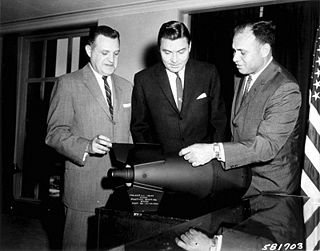
A tactical nuclear weapon (TNW) or non-strategic nuclear weapon (NSNW) is a nuclear weapon that is designed to be used on a battlefield in military situations, mostly with friendly forces in proximity and perhaps even on contested friendly territory. Generally smaller in explosive power, they are defined in contrast to strategic nuclear weapons, which are designed mostly to be targeted at the enemy interior far away from the war front against military bases, cities, towns, arms industries, and other hardened or larger-area targets to damage the enemy's ability to wage war. As of 2024, tactical nuclear weapons have never been used.

Dispersal is a military practice of dispersing or spreading out potentially vulnerable military assets, such as soldiers, aircraft, ships, tanks, weapons, vehicles, and similar equipment of an army, navy, or air force. Its primary objective is to minimise any potential effects of collateral damage, from incoming munitions such as artillery, bombs and missiles. Dispersal increases the number of artillery rounds needed to neutralise or destroy a military unit in proportion to the dispersal of the said unit. If a division doubles the area it takes up, it will double the number of artillery rounds needed to do the same damage to it. As more targets are spread out or dispersed, more artillery and / or bombs are required to hit all the individual targets.
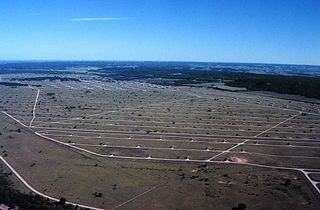
Weapon storage areas (WSA), also known as special ammunition storage (SAS), were extremely well guarded and well defended locations where NATO nuclear weapons were stored during the Cold War era.

Volkel Air Base is a military airbase used by the Royal Netherlands Air Force (RNLAF) - Dutch: Koninklijke Luchtmacht (KLu), located near the village of Volkel, Netherlands. It is home to one F-16 Fighting Falcon squadron, No 312 and a F-35 squadron No 313 and a maintenance, logistical, a base Squadron for the RNLAF.

Kleine Brogel Air Base is a Belgian Air Component military airfield located 0.8 nautical miles east of Kleine-Brogel, in the municipality of Peer, Belgium. It is home to the Belgian 10th Tactical Wing, which operates F-16 Fighting Falcons. As part of nuclear sharing it is also the home of the United States Air Force's 701st Munitions Support Squadron. As of 2023, Kleine Brogel is one of six active air bases in five European countries with B61 nuclear bombs in underground WS3 Weapon Storage and Security System inside aircraft shelters.

Project E was a joint project between the United States and the United Kingdom during the Cold War to provide nuclear weapons to the Royal Air Force (RAF) until sufficient British nuclear weapons became available. It was subsequently expanded to provide similar arrangements for the British Army of the Rhine. A maritime version of Project E known as Project N provided nuclear depth bombs used by the RAF Coastal Command.
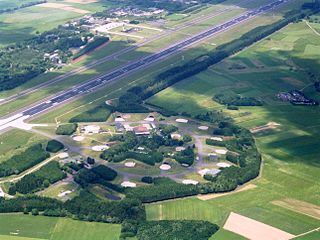
Büchel Air Base is a military air base of the Luftwaffe in Büchel (Germany), near the city of Cochem and at about 70 km from Spangdahlem Air Base. It is home to the Taktisches Luftwaffengeschwader 33 of the German Air Force (Luftwaffe) and the 702 Munitions Support Squadron of the United States Air Force (USAF). Since 1985, tactical Air Force Wing 33 has been operating German Panavia Tornado airplanes, which can deliver twenty B61 nuclear bombs, the only remaining nuclear weapons in Germany. As of 2023, Büchel was one of six active air bases in five European countries with B61 nuclear bombs in underground WS3 Weapon Storage and Security System inside aircraft shelters, per nuclear sharing.
Ghedi Air Base is a base of the Italian Air Force in Ghedi, about 15 kilometres from Brescia, northern Italy.
